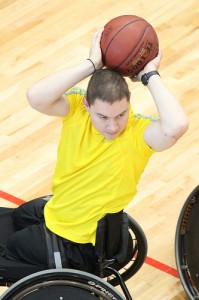 Physical exercise is essential to overall wellness.
Physical exercise is essential to overall wellness.
The Mayo Clinic reports that exercise eases symptoms of depression and anxiety and enhances health in a variety of ways.
Youth who enjoy physical activities and exercise tend to lead more active and healthy lives as adults.
But if exercise is to become an integral part of our lives, we must find activities we enjoy doing that are accessible to us on a regular basis. What’s more, we’ll need to “change up” our activities periodically to avoid boredom and maximize the benefits of exercise.
Here are some resources that will help your child discover a variety of physical activities that meet personal needs and interests.
14 Weeks to a Healthier You
The National Center on Physical Activity and Disabilities (NCPAD) offers a free online 14-week personalized fitness program.
Participants complete a profile questionnaire. A personal exercise routine is suggested based on this profile. Video demonstrations are provided and new activities are added each week. The program includes a goal-setting and progress monitoring tool, motivational materials, a social networking component, nutrition tips and access to a coach. Learn more here.
Wii Fit Hacks
Wii Fit offers many fun ways to get moving. But there are some usability issues for people with various disabilities. Creative thinkers are developing new hacks to get around these obstacles.
Here you’ll find a guide for overcoming various Wii Fit accessibility challenges. And here you’ll find a specific hack for the Wiimote that replaces the small buttons with large ones. New Wii hacks come out all the time. So do a google search to find one that works for you.
Accessible, Inclusive and Adaptive Sports and Recreation Programs
NCPAD offers a directory of accessible and adapted fitness programs here. You can also research opportunities by sport or fitness activity. You’ll find information about camp resources here. And a directory of recreational organizations here.
To find out about adaptive sports in your area, click on the location nearest you on this map to contact a chapter of Disabled Sports USA.
Use this directory to find out what Special Olympics sports opportunities are available in your area.
Consider subscribing to the NCPAD Newsletter for new recreation and fitness ideas.
Your turn
Each child has unique interests and needs. What are your teen’s favorite ways to get moving? Are there particular challenges or successes you’d like to share? We’d love to hear from you.
Did you find this post helpful? Please share it. Thanks!
Photo by usmc wounded warrior regiment at Flickr



{ 2 comments… read them below or add one }
I met a man in a wheelchair at the karate school where we both got our blackbelts. I was 43 when I started the program and he couldn’t use his legs so we both had some “adaptation” to cope with, but the principles we trained by were the same as everybody else: 1) always do your best 2) only compare yourself to yourself, be better today than you were yesterday 3) don’t quit 4) you can do anything you want to do if you’re willing to do whatever it takes to get it done. Three years later I got my blackbelt by defending myself against five people at once … I didn’t have to win, I just had to not give up. He got his blackbelt by being dumped out of his wheelchair and being able to get the chair up right and get himself back into it ready to roll in 30 seconds!! I think we were equally challenged and equally able to take care of ourselves.
Sue, the 4 principles you both trained by apply to every aspect of life, don’t they?
I especially appreciate #2 - because I think it provides motivation for the other three. Thanks for sharing!